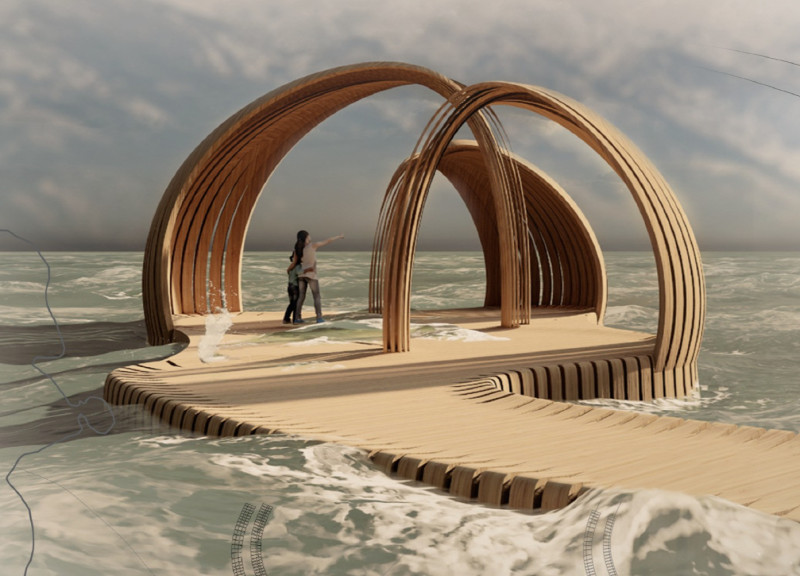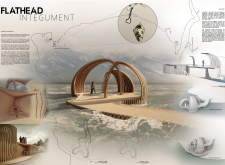5 key facts about this project
At its core, Flathead InteguMENT represents a balance between functionality and aesthetic appeal. The architecture emphasizes open and flexible spaces that cater to a variety of uses, from quiet reflection to lively gatherings. This versatility is vital in creating an inclusive environment that can accommodate diverse community needs. The pavilion's layout is designed to encourage movement and interaction, inviting visitors to explore different areas while remaining connected to the picturesque setting of Flathead Lake.
The design of Flathead InteguMENT features a series of curved forms that mimic the organic shapes found in nature. This biomimetic approach is not only visually appealing but also serves a practical purpose by enhancing the building's performance in response to environmental factors. The fluid lines of the structure evoke a sense of movement, aligning the architecture with the flowing waters of the lake. This connection to the natural world is further reinforced by the selection of materials used in the construction.
Sustainability is a noteworthy aspect of the project, with materials chosen for their resilience and environmental compatibility. Laminated veneer lumber is utilized for its combination of strength and aesthetic qualities, offering both durability and a warm, natural finish. Composite decking extends the pavilion’s footprint into the landscape, creating seamless transitions between the built structure and its surroundings. Glass elements strategically placed throughout the design enhance visibility, providing expansive views of the lake and inviting natural light into the interior spaces. The use of steel in the structural framework ensures stability while allowing for the elegant curves that define the pavilion's form.
Particular attention has been given to the pavilion's relationship with the climate, as design decisions take into account site-specific environmental conditions. Features such as overhangs not only provide shade and shelter but also facilitate natural ventilation, contributing to enhanced user comfort. This thoughtful approach to environmental integration highlights the architecture's responsiveness to its location, ensuring the pavilion remains in harmony with seasonal changes, including fluctuations in water levels.
Another significant aspect of Flathead InteguMENT is its role as a social gathering point within the community. The pavilion's presence serves to enhance the area, acting as a focal point for community activities and interactions. By encouraging social engagement, the design fosters a sense of belonging and collective identity among visitors, emphasizing architecture's role in enhancing community dynamics.
The unique design features of Flathead InteguMENT extend beyond its visual appeal. The combination of organic forms, sustainable materials, and an emphasis on human connection culminates in an architectural solution that is both functional and evocative. The pavilion stands as a modern interpretation of traditional communal spaces, blending contemporary design with a respect for the local context.
For those interested in architectural innovation and design principles, an exploration of Flathead InteguMENT provides valuable insights into how architecture can effectively respond to its environment while fostering community interaction. To gain a deeper understanding of the project's nuances, including architectural plans, sections, and design concepts, readers are encouraged to delve further into the project presentation.























